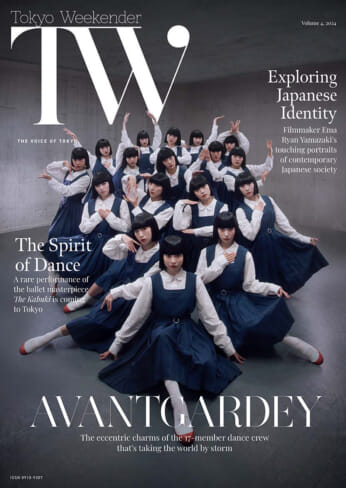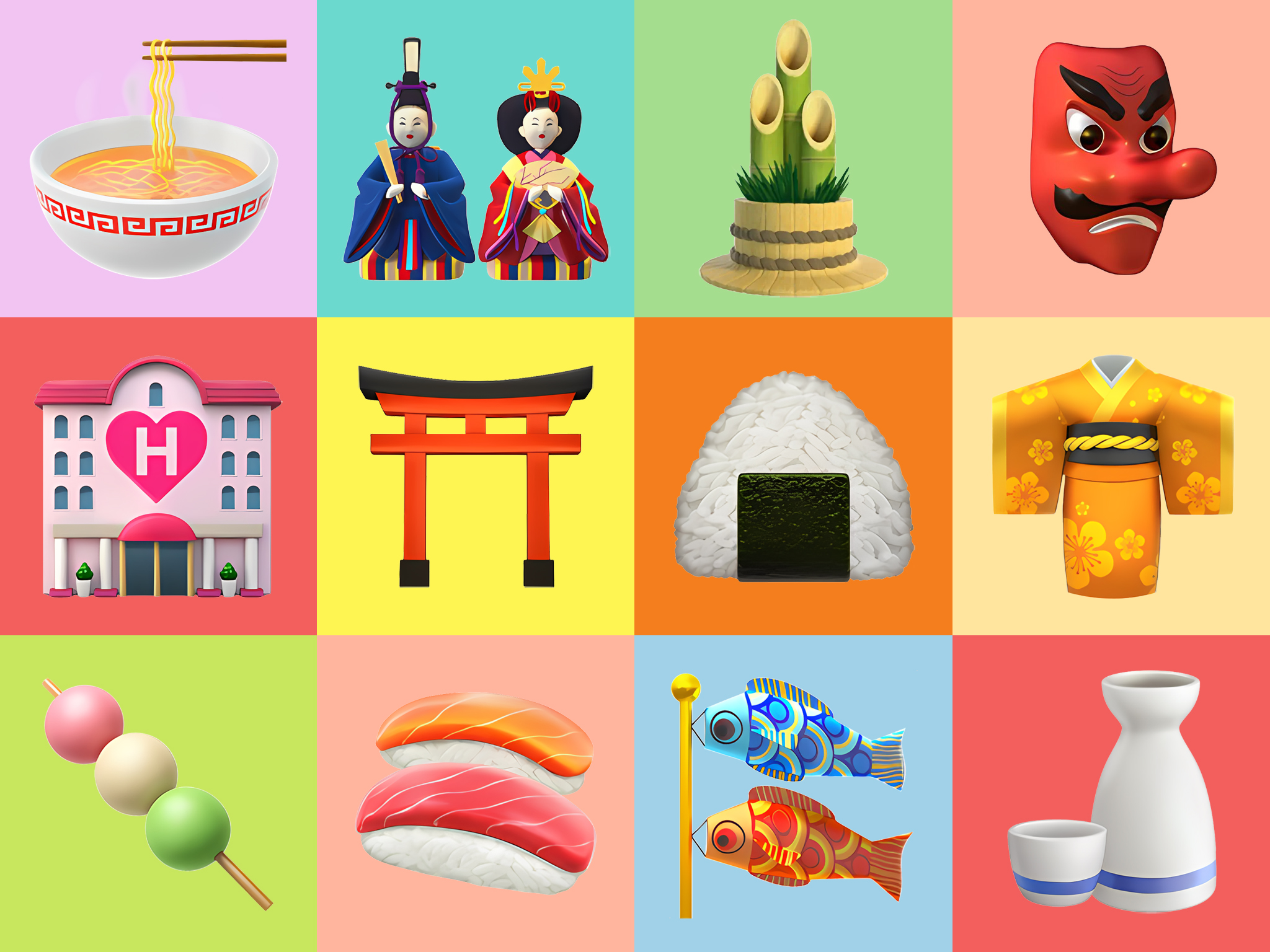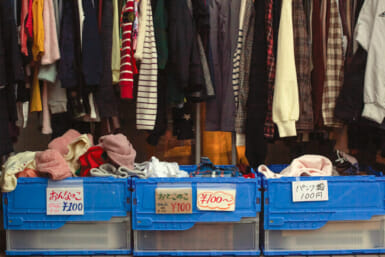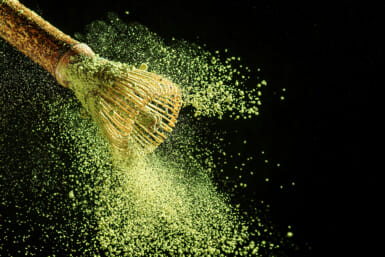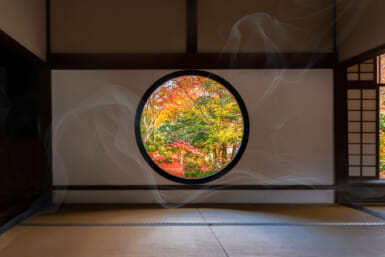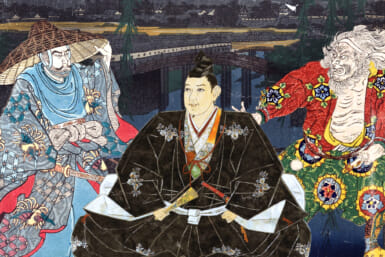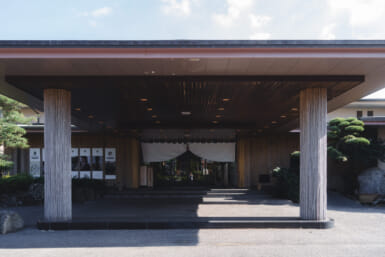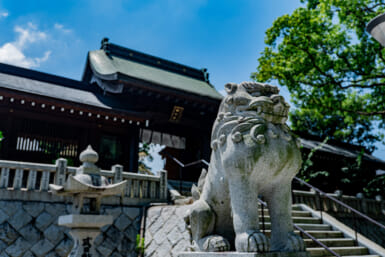In 1999, Japanese artist and interface designer Shigetaka Kurita was working with the development team of i-mode, an early mobile internet platform from NTT Docomo, one of Japan’s telecommunications carriers. The service only allowed for 250 characters, so the team was looking to develop a slick and concise way to convey information. Kurita, working with 12-by-12 pixel grids, sketched a set of tiny artworks, which became the original 176 emoji.
Now, over 92% of the world’s online population uses emoji, according to the Unicode Consortium. As of the Unicode 15.1 update from September 2023, there are 3,782 standard emoji.
The word “emoji,” though often mistaken as having evolved from the word “emoticon,” is actually a Japanese word. Broken down, its kanji characters — 絵文字 — translate to “picture” (絵) + character (文字). Because of emoji’s origins and deep history in Japan, there are numerous emoji depicting Japanese icons, foods and holidays. But because of their specific cultural alignment, these emoji often go unnoticed. Here is a full breakdown of all 50 current Japanese emoji and their meanings.

Smileys & People
1. Ogre: This ogre is actually an oni. Oni are usually evil creatures in Japanese mythology. They’re similar to ogres, demons and trolls.
2. Kimono: “Kimono” means “thing to wear.” It generally refers to traditional Japanese clothing.
3. Goblin: This emoji is a tengu mask. Tengu are bird-like supernatural beings in the Shinto religion.

Nature
4. Pine Decoration: Kadomatsu are traditional Japanese New Year’s decorations. They’re made of bamboo and are displayed in front of homes and buildings to welcome ancestral spirits.
5. Tanabata Tree: During the Tanabata festival season, people write their wishes on colorful paper and hang them up on bamboo wish trees.
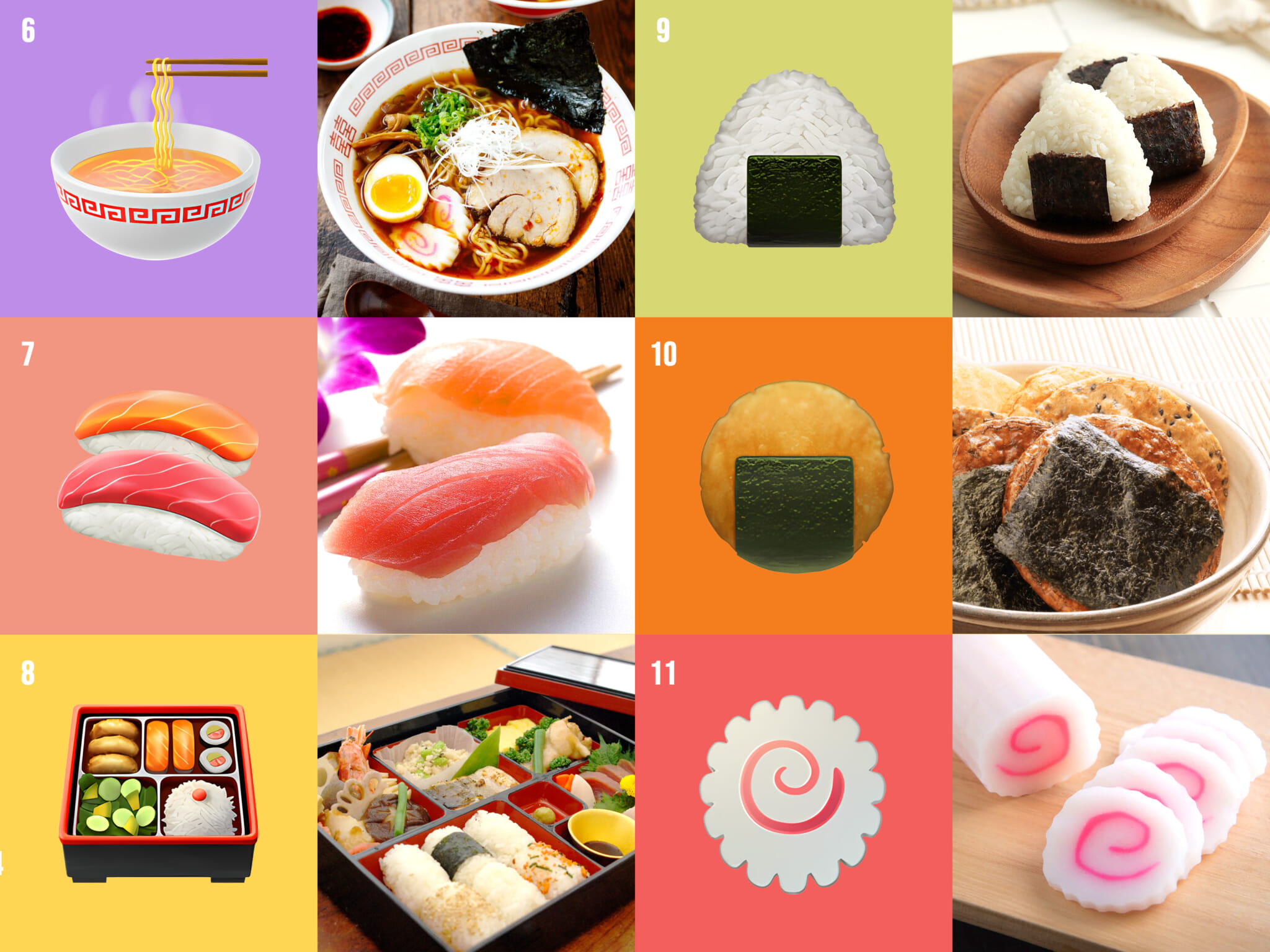
Food & Drink
6. Steaming Bowl: The ramen bowl’s rim is decorated with a traditional design — a red kaminari lightning pattern.
7. Sushi: Most sushi emoji will show a salmon and tuna nigiri, but some platforms display a piece of maki, or roll-type sushi.
8. Bento Box: A bento is a packed meal that’s sometimes plated in a lacquered container. Because of slight variations across platforms, it’s fun to see what kind of dishes are packed in each bento emoji. There is often rice with a pickled plum, sushi and vegetables.
9. Rice Ball: An onigiri or omusubi is a triangular rice ball with numerous possible fillings and a piece of seaweed at the bottom for easy handling.
10. Rice Cracker: There are several types of senbei, or rice crackers. This one is nori senbei, which is glazed with soy sauce and wrapped in seaweed.
11. Fish Cake with Swirl: This is a slice of narutomaki, a type of kamaboko fish cake with a distinctive pink swirl that resembles the Naruto whirlpools in Tokushima Prefecture. Naruto is a common topping for ramen.

12. Oden: Oden is a stewed dish typically consisting of fish cake, tofu, boiled eggs and konnyaku yam cake simmered in broth.
13. Dango: Dango are sweet dumplings made of glutinous rice flour. The emoji dango is a hanami dango, a tricolor variation popular during cherry blossom viewing season.
14. Sake: Sake — or, more accurately, nihonshu — is an alcoholic drink made from rice that’s usually served in a ceramic tokkuri bottle with a matching choko cup.
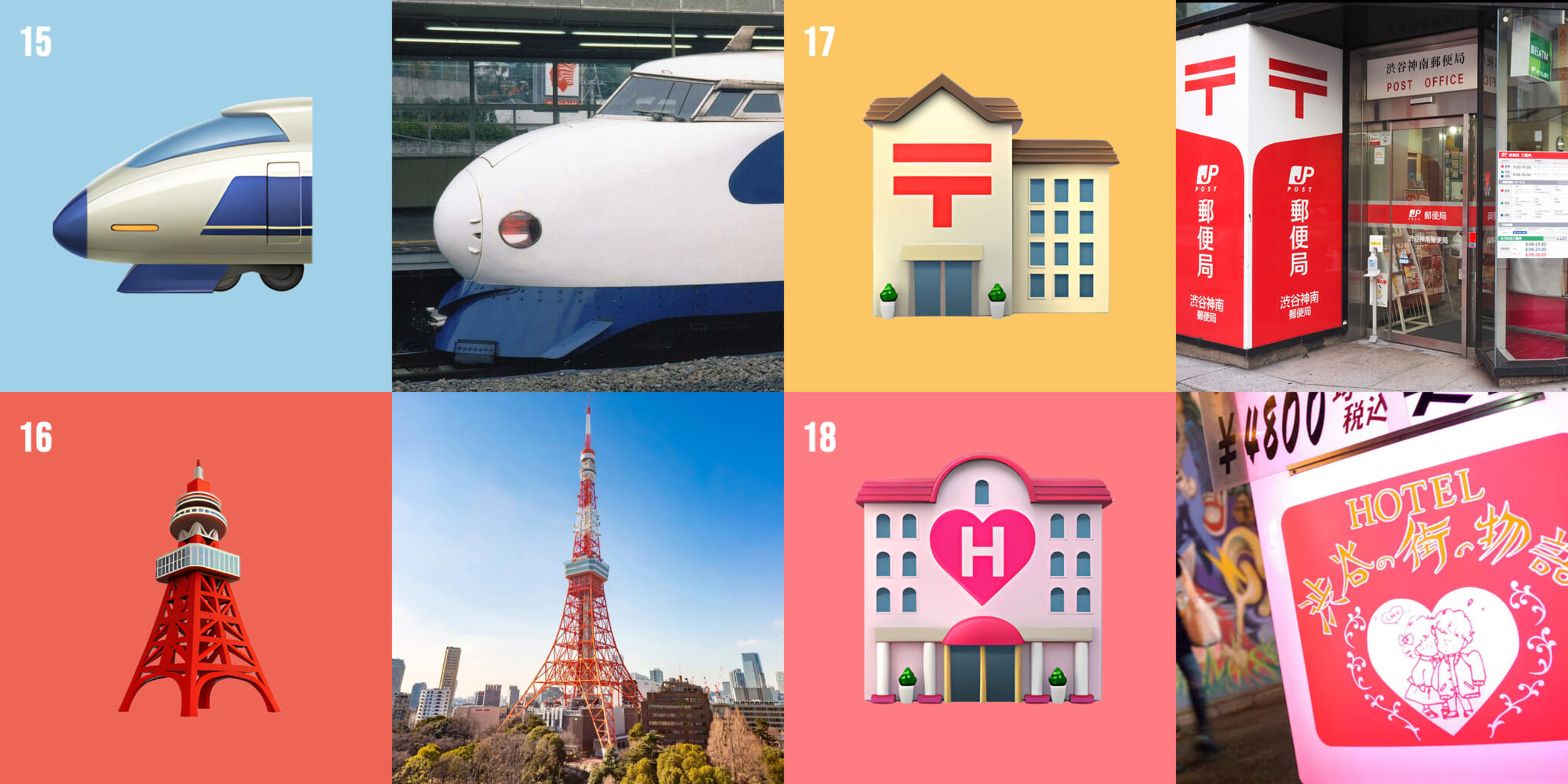
Travel & Places
15. Bullet Train: The world’s first high-speed train, the 0 Series shinkansen, had its launch in 1964. Though designs differ, this emoji usually has a white body with blue accents — matching the original shinkansen.
16. Tokyo Tower: At 333 meters, Tokyo Tower is the second-tallest building in Japan. This emoji is often mistaken for the Eiffel Tower, which was the inspiration for Tokyo Tower.
17. Japanese Post Office: What makes this emoji specifically a Japanese post office is the 〒 symbol, which is the Japanese postal mark.
18. Love Hotel: This emoji is usually mistaken for a cute hospital with a big pink heart, but the “H” actually stands for “hotel.” Love hotels are accommodations couples can rent by the hour. Though this type of hotel exists around the world, the term “love hotel” originated in Osaka.
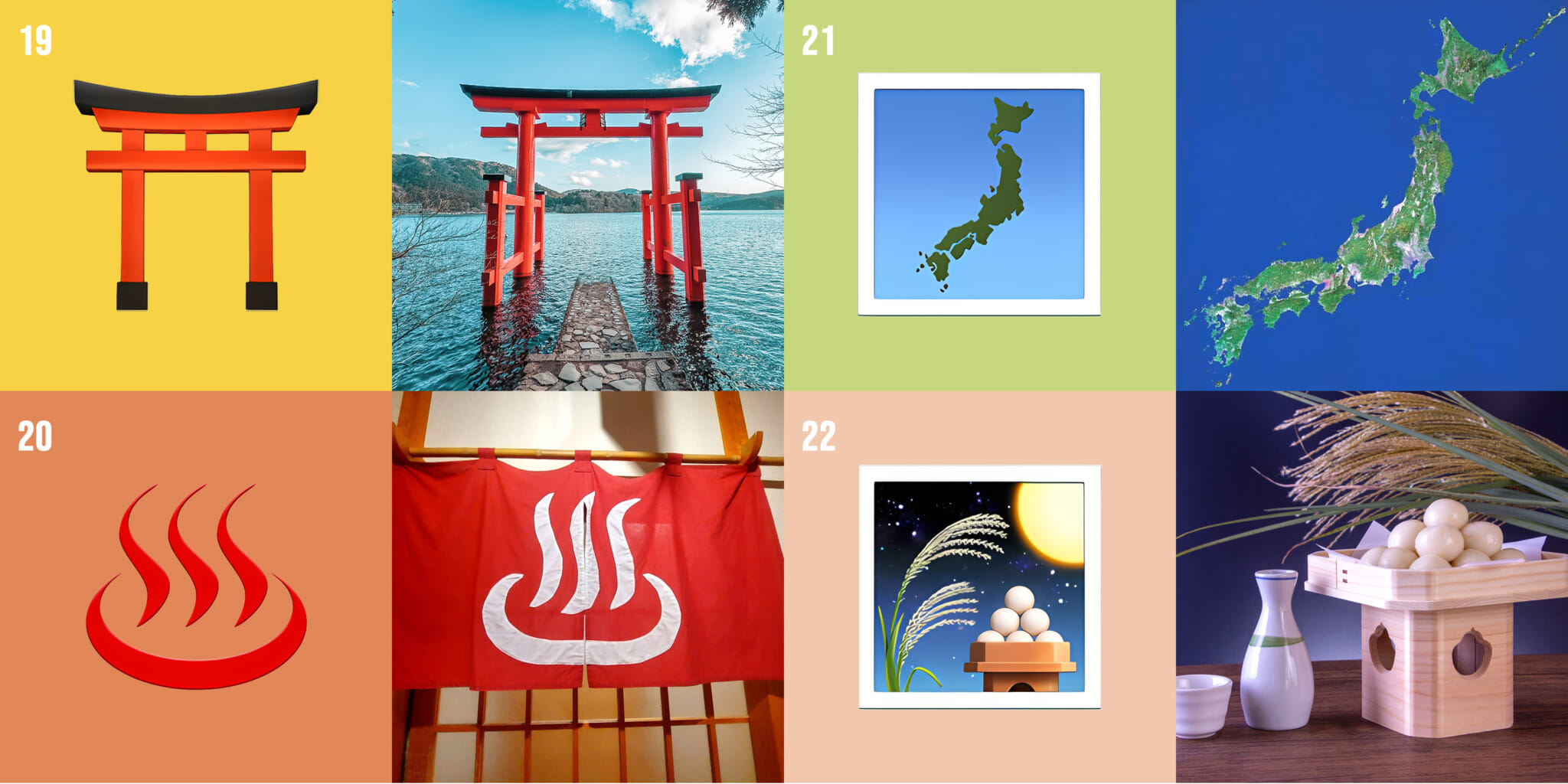
19. Shinto Shrine: The red torii gates of Shinto shrines are iconic symbols of the religion. The gates mark the threshold between the mundane world and the sacred.
20. Hot Springs: You can find this symbol, representing steam rising from water, at any onsen in Japan. It’s used to indicate hot springs on maps.
21. Map of Japan: Japan, which also boasts two emoji flag options, is the only country to have its silhouette depicted in a designated emoji map.
22. Moon Viewing Ceremony: This emoji represents Tsukimi, Japan’s mid-autumn festival, which involves admiring the harvest moon. Festival traditions include adorning homes with decorations made from Japanese pampas grass and eating dango — white to match the full moon.
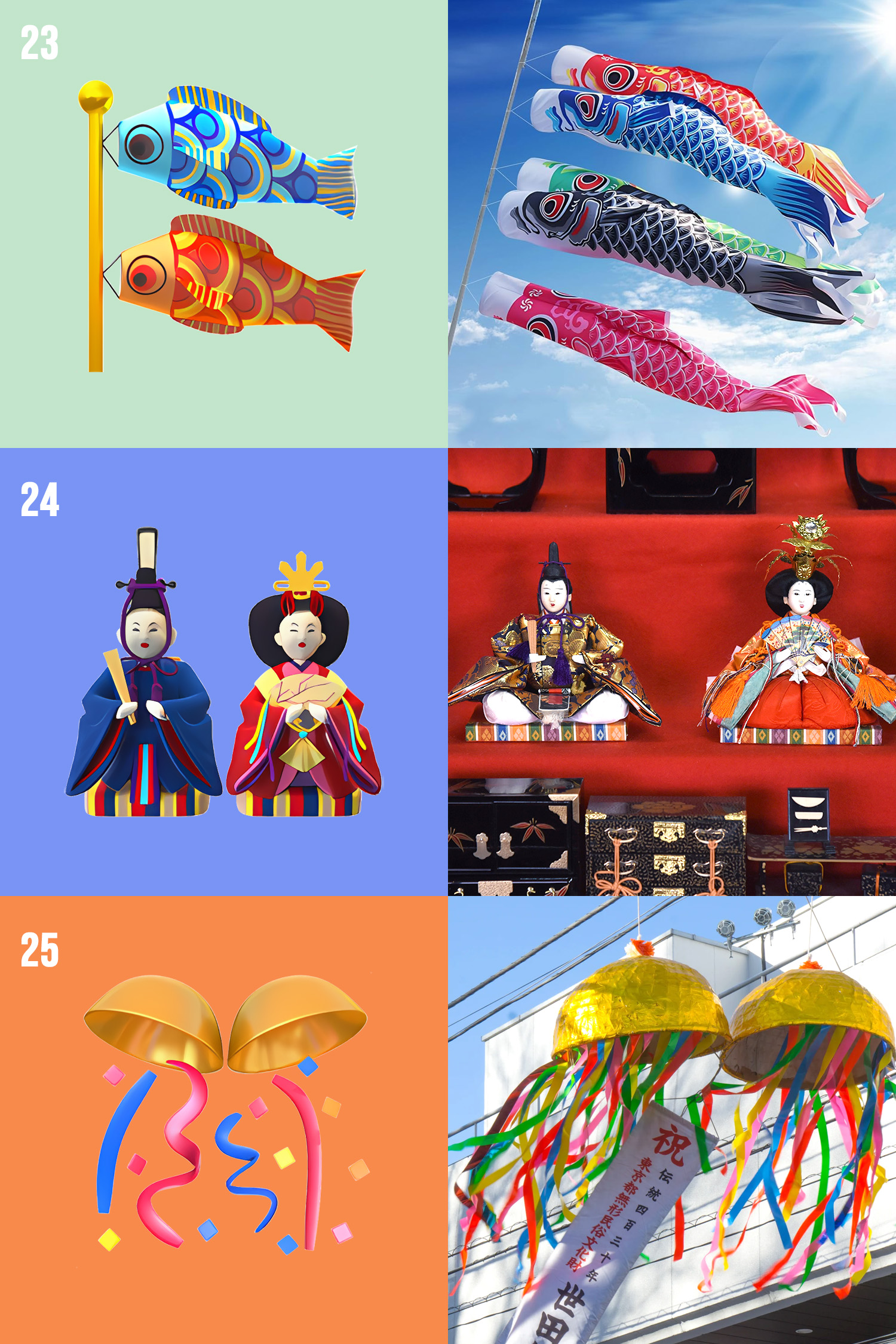
Objects
23. Carp Streamer: Koinobori are carp-shaped windsocks that are flown in celebration of Children’s Day in May.
24. Japanese Dolls: To celebrate March’s Hina Matsuri, or Girls’ Day, families display a multi-tiered altar of dolls representing the imperial court of the Heian period. These dolls are called hina ningyo.
25. Confetti Ball: This confetti-releasing contraption is a waritama, a type of kusudama decoration ball that splits in the middle to release confetti and streamers during big celebrations. They’re usually seen at graduations, festivals, and company inaugurations and anniversaries.
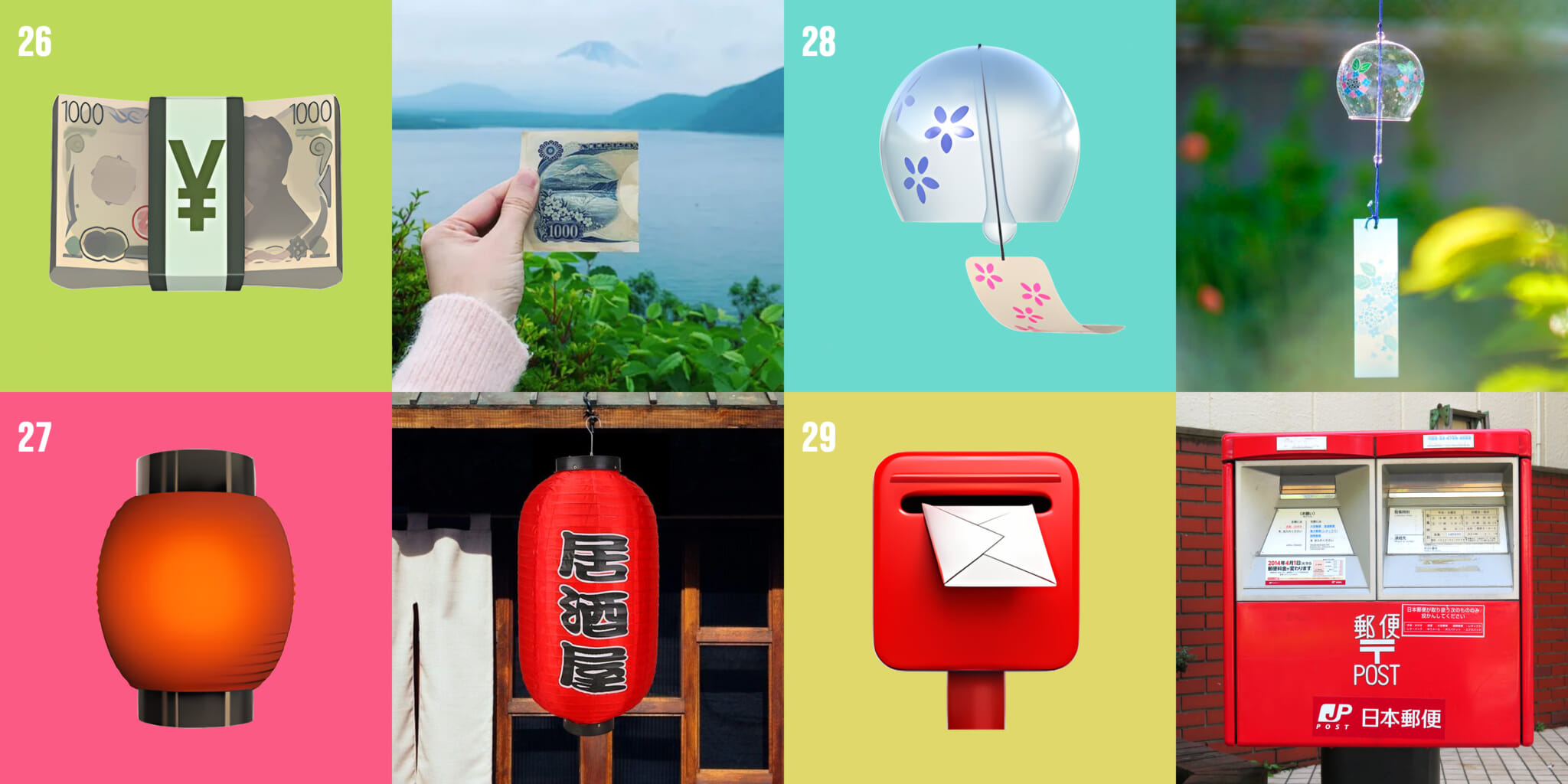
26. Yen Banknote: Four currencies are featured in the emoji library: US dollars, euros, pounds and yen.
27. Red Paper Lantern: Akachochin lanterns like this are common outside izakaya. An akachochin hanging outside of an establishment often signals that it serves alcohol.
28. Wind Chime: Furin are Japanese glass wind chimes often seen in the summer months. They were originally intended as talismans to ward off evil spirits, so they can also be found at many shrines and temples.
29. Postbox: These mailboxes depict Japan Post’s red postboxes.
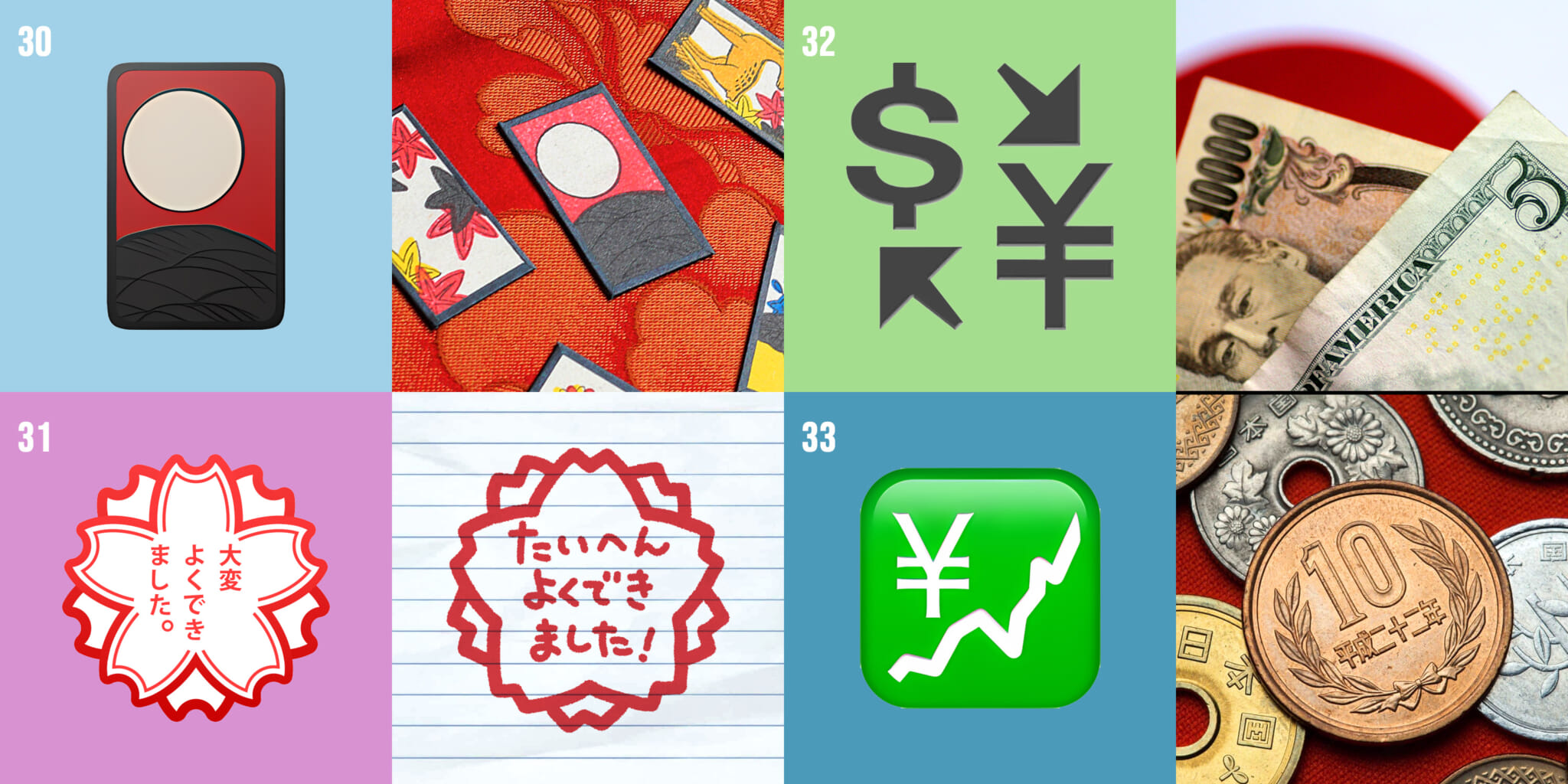
Symbols
30. Flower Playing Cards: This is the Full Moon with Red Sky card from a deck of hanafuda playing cards. It represents the harvest moon.
31. White Flower: This emoji echoes the hanamaru stamp that Japanese teachers use to mark a high score. It says taihen yoku dekimashita, meaning “very well done.”
32. Currency Exchange: The emoji for exchanging currency often depicts dollars and yen.
33. Chart Increasing with Yen: This graph shows an upward-trending yen, something that’s not been seen of late, as the yen recently hit a 37-year low.

34. Japanese “Here” Button: This emoji features koko (“here”) written in katakana.
️35. Japanese “Service Charge” Button: This emoji has the katakana sa for sabisu, or service.
36. Japanese “Acceptable” Button: This kanji is read as ka and means “passable” or “permissible.”
️37. Japanese “Free of Charge” Button: This is the first kanji of the word muryo, which means “free.” The kanji also carries the meaning of “nothingness” and, in some contexts, can indicate that something is not available.
38. Japanese “Not Free of Charge” Button: This emoji often indicates that something requires payment or a fee. The featured kanji also means “existence” or “possession” and can indicate that a business offers a service or item.
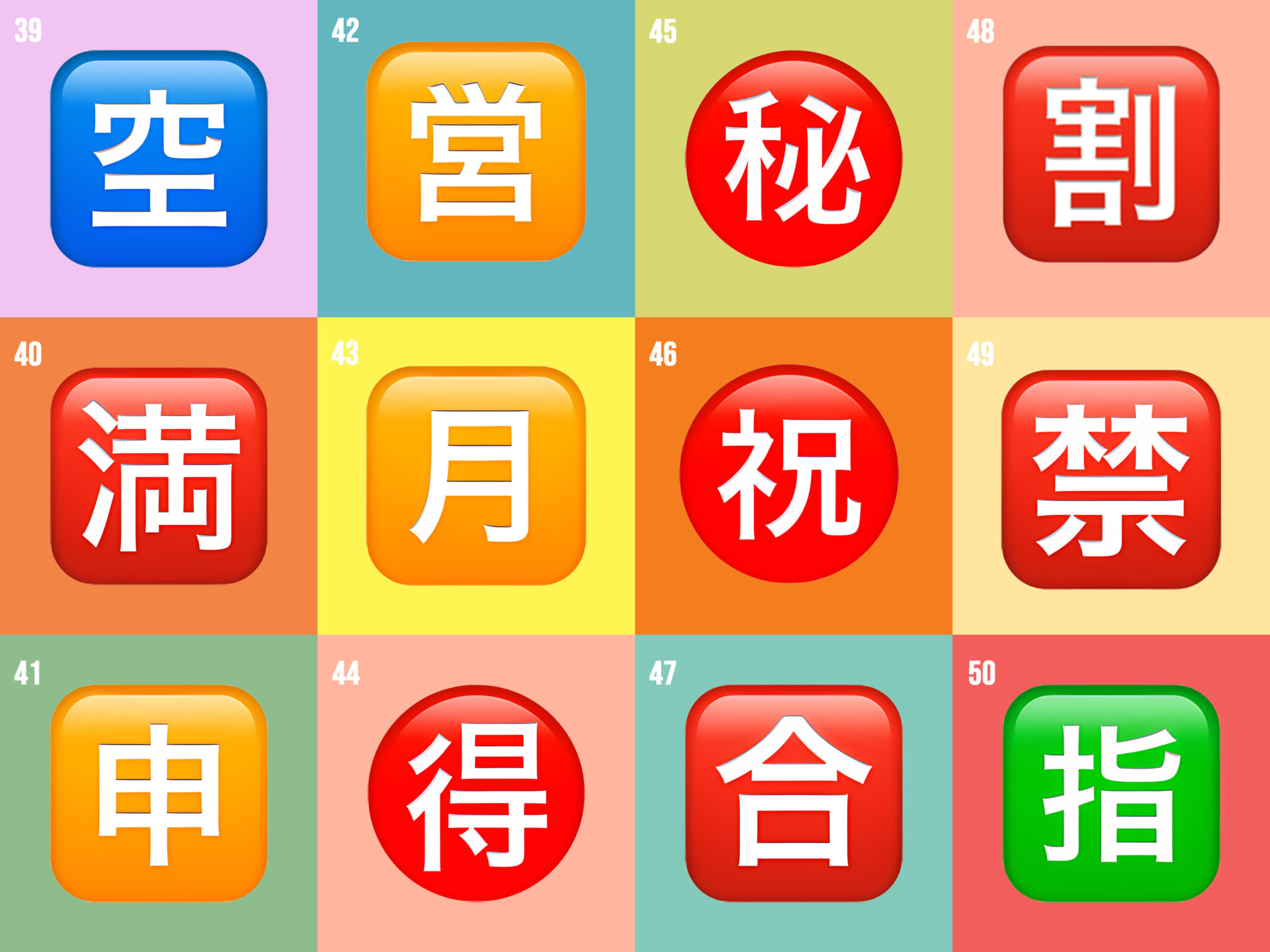
39. Japanese “Vacancy” Button: This kanji means “empty” or “vacant” and is generally used to denote a vacancy in a hotel or parking lot.
40. Japanese “No Vacancy” Button: The opposite of the Japanese “Vacancy” Button, this kanji means “full.” You’ll also see it combined with the sakura emoji to signify that blossoms are in full bloom.
41. Japanese “Application” Button: This kanji is the shin in shinsei, which means “application” or “request.” It’s commonly seen in contexts like job applications and friend requests. The kanji also represents the Monkey in the Chinese zodiac, so you may see it used in monkey-related posts, too.
42. Japanese “Open for Business” Button: This kanji is the ei in eigyo, meaning “business” or “operations.” In addition to signaling that a business is currently open, it’s often used to indicate a business’s hours of operation.
️43. Japanese “Monthly Amount” Button: This kanji can mean both “month” and “moon.” It’s often used to represent months in dates, as well as to indicate the moon.
44. Japanese “Bargain” Button: This kanji is toku, which means “special.” The emoji often indicates a special sale or promotion.
45. Japanese “Secret” Button: This kanji is hi, the first kanji in the word himitsu, which means “secret.”
46. Japanese “Congratulations” Button: This kanji means “celebrate” and “congratulate.” It can also denote a public holiday.
47. Japanese “Passing Grade” Button: This kanji means “fit,” “join” or “suit.” It’s often used as shorthand for gokaku, meaning “passed.” It’s an emoji everyone wants to see during juken (entrance examination) season.
48. Japanese “Discount” Button: This kanji carries the meaning of “proportion,” “divide” or “split.” It commonly appears in words related to discounts and reduced prices.
49. Japanese “Prohibited” Button: This kanji is kin, which means “ban” or “prohibition.”
️50. Japanese “Reserved” Button: This kanji can be read as yubi, meaning finger. It also carries the meanings of “indicate,” “designate” and “point to.” It can denote direction or signify that something has been set aside for a specific purpose.
As you become more familiar with these culturally specific emoji, keep in mind that emoji, like language, are constantly evolving, and their meanings can change over time. Moreover, context is crucial — the meaning of these emoji can vary depending on how they’re used. These are just the basics, to understand the origins of emojis across Japanese culture. Now, go and have fun with them!
